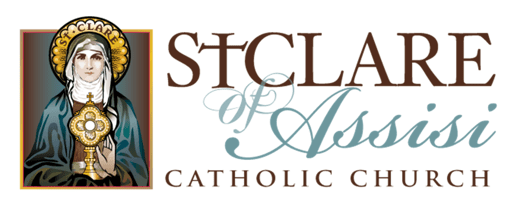Overview of Catholic Funeral Rite
The Catholic funeral rite is divided into several stations, or parts, each with its own purpose. For this reason, we recommend following the complete structure and making use of each station.
Vigil Service (Wake)
“At the vigil, the Christian community keeps watch with the family in prayer to the God of mercy and finds strength in Christ’s presence”. The Vigil Service usually takes place during the period of visitation and viewing at the funeral home. It is a time to remember the life of the deceased and to commend him/her to God. In prayer we ask God to console us in our grief and give us strength to support one another.
The Vigil Service can take the form of a Service of the Word with readings from Sacred Scripture accompanied by reflection and prayers. It can also take the form of one of the prayers of the Office for the Dead from the Liturgy of the Hours. The clergy and your funeral director can assist in planning such service.
It is most appropriate, when family and friends are gathered together for visitation, to offer time for recalling the life of the deceased. For this reason, eulogies are encouraged to be done at the funeral home during visitation or at the Vigil Service.
Funeral Liturgy
The funeral liturgy is the central liturgical celebration of the Christian community for the deceased. When one of its members dies, the Church encourages the celebration of the funeral liturgy at a Mass. When Mass cannot be celebrated, a funeral liturgy outside Mass can be celebrated at the church or in the funeral home.
At the funeral liturgy, the Church gathers with the family and friends of the deceased to give praise and thanks to God for Christ’s victory over sin and death, to commend the deceased to God’s tender mercy and compassion, and to seek strength in the proclamation of the Paschal Mystery. The funeral liturgy, therefore, is an act of worship, and not merely an expression of grief.
Rite of Committal (Burial or Interment)
The Rite of Committal, the conclusion of the funeral rite, is the final act of the community of faith in caring for the body of its deceased member. It should normally be celebrated at the place of committal, that is, beside the open grave or place of interment. In committing the body to its resting place, the community expresses the hope that, with all those who have gone before us marked with the sign of faith, the deceased awaits the glory of the resurrection. The Rite of Committal is an expression of the communion that exists between the Church on earth and the Church in heaven: the deceased passes with the farewell prayers of the community of believers into the welcoming company of those who need faith no longer but see God face-to-face.
Frequently Asked Questions
Are there fees associated with a funeral?
There are no fees for having a funeral at St. Clare’s. However, we do ask for a donation to pay stipends to the musicians and priest at your discretion.
How are readings selected for the funeral?
Father Tim has specific readings that he uses at funerals. If you would like to choose other readings, please discuss with him.
Does the Catholic Church permit cremation?
The Church prefers that the body of the deceased be present for the funeral rites, since the presence of the human body better expresses the values which the Church affirms in those rites. It is preferable to have cremation take place after the funeral with the internment to follow. If cremation occurs before the funeral rites, the cremated remains should be present for the funeral rites. The cremated remains should be treated with the same respect given to the human body. This includes the use of a worthy vessel to contain the ashes, the care and attention to appropriate placement and transport, and the final disposition.
The cremated remains should be buried in a grave or entombed in a mausoleum or columbarium. The practice of scattering cremated remains in the sea, from the air, or on the ground, or keeping cremated remains in the home of a relative or friend of the deceased is not permitted.
May a eulogy be given at a funeral?
Eulogies and remarks about the deceased should be made at a vigil before the funeral or at a reception after the funeral so as not to distract from the solemnity of the funeral liturgy itself.
May non-Catholics serve as a reader or other minister at a funeral?
When there is a Funeral Mass, it is required that readers/lectors and all participating as public ministers in the liturgy be Catholic. Musicians may be non-Catholics.
May non-Catholics receive Communion at a Catholic Mass?
As Catholics, we believe that the Eucharist is the Body, Blood, Soul and Divinity of Jesus Christ. The reception of the Eucharist is a sign of our communion with the Catholic church. Members of Ecclesial groups with whom we are not yet fully united are therefore not able to participate in Holy Communion. Those who are not receiving communion are invited to simply remain in their pews, or they may come forward with arms crossed to receive a blessing.
To plan a funeral at St. Clare, please contact Cheryl Base prior to making the arrangements with the Funeral Home. Your parish family at St. Clare is here for you if there is anything you need on this part of your life journey. Please know we will be praying for your loved one in their journey and for your family. Please do not hesitate to call or email us if we can be of assistance at any time.

